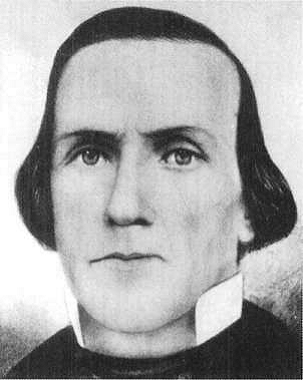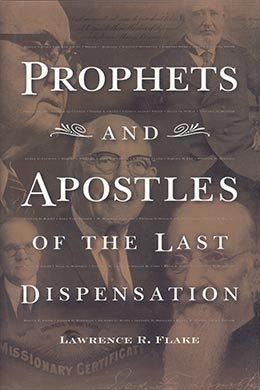Luke Samuel Johnson
Lawrence R. Flake, Prophets and Apostles of the Last Dispensation (Provo, UT: Religious Studies Center, Brigham Young University, 2001), 363–65.

Born: 3 November 1807, Pomfret, Vermont
Quorum of the Twelve Apostles: 15 February 1835 (age 27)
Excommunicated: 13 April 1838
Rebaptized: 8 March 1846
Died: 9 December 1861 (age 54), Salt Lake City, Utah
At an open-air meeting in Nauvoo, shortly before the Saints were forced out of that city, Luke S. Johnson, former apostle of the Church, was permitted to speak to the congregation. Excommunicated for apostasy eight years earlier during the Kirtland period, Luke had remained friendly to the Saints, occasionally visiting his brother-in-law, Elder Orson Hyde. As part of his address he said, “I have stopped by the wayside and stood aloof from the work of the Lord But my heart is with this people. I want to be associated with the saints; go with them into the wilderness and continue with them to the end.” [1] Accepted by the vote of the Church, Brother Johnson was rebaptized.
Luke Johnson’s first baptism had been performed by Joseph Smith, who was befriended by the Johnson family in Ohio after the Prophet miraculously healed Luke’s mother’s crippled arm. The Prophet and his family lived in the Johnson home in Hiram, Ohio, for a time beginning in the fall of 1831. Soon after joining the Church, Luke filled a mission to southern Ohio. Later, as a companion to Sidney Rigdon, he helped teach and baptize more than fifty people in New Portage, Ohio, and several more in Pittsburgh, Pennsylvania, including Elder Rigdon’s mother and eldest brother.
On at least two occasions Luke protected the Prophet Joseph Smith from the designs of his enemies, and he once helped Joseph Smith Sr. avoid an illegal trial by telling the court jokes while Father Smith escaped through a window. On a mission through Virginia and Kentucky in 1832, Elder Johnson and two companions baptized more than one hundred persons. The next year he married Susan Poteet, and in 1834 he marched with Zion’s Camp. When the Quorum of the Twelve was organized in 1835, Luke and his younger brother, Lyman, were chosen to be apostles. His excommunication resulted from his apostasy after the financial failure of the Kirtland Safety Society. Before he rejoined the Church, Luke taught school in Virginia and practiced medicine in Ohio.
Brother Johnson was among the pioneers traveling to Utah with Brigham Young in 1847. The town of St. John in Tooele County was named in his honor, and he became the bishop there. When Luke Johnson died in 1861, President Young wrote of him: “Since his return to the church he has lived up to the truth to the best of his ability, and he died in the faith.” [2]
Notes
[1] “Deposed Church Official Won Reinstatement,” Church News, 19 November 1960, 16.
[2] B. H. Roberts, A Comprehensive History of the Church of Jesus Christ of Latter-day Saints (Provo, UT: Brigham Young University Press, 1965), 5:143. See also Keith Perkins, “A House Divided,” Ensign, February 1979, 56–57.
